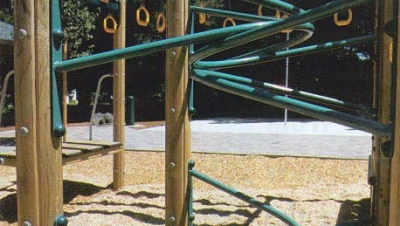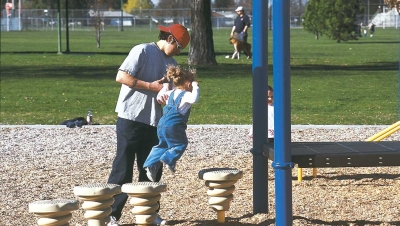ASTM Balloting
Part 1 of 3
The new starting point for debate on this very complicated Issue
Let’s recap the status of the ASTM ballot process on the issue of lowering the F1292 impact threshold from 1000 to 700 HIC. No change has been approved through the ASTM standards development process. The appeal ruling by the ASTM Council on Standards (COS) was never about the content of the issue or whether the change in HIC was warranted. The appeal was taken up by COS to determine if the ASTM balloting process was strictly followed. There was another concern raised on whether or not it was appropriate to go out to ballot on the same subject matter that was once voted down. This has always been within the authority of the Chair of the Subcommittee.
The outcome of this COS appeal resulted in another ballot a few months later on exactly the same motion. This time the ballot had many more negative votes with basically the same rationale given on the previous ballot. Negative voters wanted proof for the change based on playground research, not research conducted by the automotive industry. People wanted empirical, not anecdotal, data related to serious head injuries. What is a serious head injury? Some only wanted to look at serious head injuries and not consider a possible reduction in long bone fractures since fractures are not specifically mentioned in the scope of the F1292. Some wanted a definitive number of injuries that occur on non-compliant versus compliant surfaces. Some wanted to know the cost benefit factors for improving surfacing performance requirements versus the societal cost of these injuries. Some wanted comparisons of playground fall-related injury costs versus those other more frequent and severe injuries sustained in other activities and locations. This information is currently not available, and I doubt it will be any time soon. Research takes time and costs money. Thus far nobody is willing to foot the bill or volunteer to take on the research.
Derogatory comments about the ASTM and the efforts of volunteer members of the ASTM F8.63 Subcommittee is troubling to me and are not warranted. I would like to think the comments were a result of a lack of knowledge and understanding about the ASTM and the ASTM standards development process. ASTM, as an institution that has been around for over 100 years, does not provide technical data or research to support the rationale of their actions. The voluntary members of each Subcommittee provide the technical and subject matter experts who volunteer their time and money to develop thousands of industry standards for materials and test methods which benefit society as a whole. All Chairs volunteer to manage the efforts of their Subcommittee.
The Chair of ASTM F8.63 Subcommittee is responsible for the current ASTM F1292 Standard and many other playground surfacing standards. The Chair is responsible to ensure the ASTM standards development process is followed throughout each step of the voting process. There has been, and will continue to be, open and robust discussions and debate on all aspects of this ballot item and other ASTM Standards ballots.
The ASTM organization, its process, and membership rules are the most transparent of any standards development organization in the world. Where else can anyone become a member of such a committee responsible for developing international voluntary industry standards for the small fee of $75 USD? Membership does not require attendance at each and every Subcommittee meeting; however, membership does require active ongoing participation in the voting process for any and all Subcommittee ballots. Members have access to all Subcommittee meeting minutes and ballots, including supporting rationale for each ballot item, as well as other pertinent documents such as research papers related to the current topics being discussed by the Subcommittee. Unfortunately, not every member has the time or resources to attend Subcommittee meetings whether they be virtual online meetings or regularly scheduled ASTM Committee Week meetings held around the US and Canada. It takes a commitment of time to read through all the information available, so members can educate themselves and make informed decisions.
The Need for Safety versus Need for Risky Play: Benefits versus Unintended Consequences
I venture to say that each and every country that has added something to this debate has a similar government mandate when it comes to local government and private industry’s responsibility for the safety of children. Public safety and injury prevention continues to be the primary focus of most standards developing organizations, but it appears injury avoidance is fast becoming the most expedient means of addressing the safety and the potential liability facing the designer, manufacturer, owner, operator, installer, and inspector of public playgrounds. Manufacturers that do not sell product in the USA do not face the same public liability issues as those who do. If they choose to sell their products in the USA, they will be under the scrutiny of the US Consumer Product Safety Commission (CPSC) and the 2008 Consumer Product Safety Improvement Act (CPSIA).
As a result of these liability issues, real or perceived, our willingness and enthusiasm to provide risky challenging playground equipment with high play value is diminished based on how much risk public agencies and product manufacturers are willing to accept. Those who care deeply about children’s development are strong advocates for the benefits of more risky play opportunities in a child’s play environment. Unfortunately, we cannot ignore the potential consequence of our actions when choosing play equipment appropriate for a particular location. These decisions are most often made by governmental authorities who, for the most part, are not well versed in all aspects of the long term management responsibilities that come with any playground.
The one question nobody has been willing or capable of answering is, how many deaths, debilitating, and/or life-threatening injuries are society and our judicial system willing to accept? These are cultural issues that must be answered by each individual country, and in the USA it may vary by state. While play is a universal need in a child’s development, it is each country’s local customs and beliefs that will determine what emphasis they will place on a child’s right and need to play.
All items brought forth, whether pro or con, on lowering the current impact attenuation performance thresholds have been discussed and debated over and over by the F8.63 Subcommittee members. Some requests for additional study and research are not much more than wishful thinking and far above the reach of this Committee. Are these requests truly warranted or are they nothing more than stall tactics or a means of adding unrelated issues to the mix to add confusion to the discussion?
Part 2 of this discussion will look at what got us to the current surfacing performance threshold. I will discuss how one other impact threshold requirement came about and how we have historically rationalized these numbers using whatever research data was available to support our rationale for the particular standard requirement.













The Fox Watching the Hen House
When you have people voting who have a vested interest in their profits, which could be negatively affected by lowering HIC score thresholds within ASTM F1292 from 1000 to 700, they'll rarely vote against their interests, even though it's hypocritical with respect to actual safety and injury mitigation. The auto industry data was used to establish playground safety, so a reasonable question might be why isn't their most recent data from almost 16 years ago not being considered? My guess is persistent ignorance and protecting one's assets instead of young children. Especially when it's been shown that 390 HIC if the threshold at which life threatening injury, Traumatic Brain Injury (TBI) or death is likely to occur for ages 1-3, 570 HIC for ages 4-5, and 700 HIC for ages 6 through adult. Until and unless the "foxes" are removed from the "hen house," it's unlikely to change and end up in a reduction of the maximum allowable HIC threshold to 700 (or lower, depending on age). We need to remove from voting those who are merely "mucking up the works" with demands beyond the scope of what the ASTM F8.63 subcommittee is expected to perform, and realize that PIP is NOT the safe surfacing it's purported to be. Additionally, tests from other countries should not arbitrarily be disregarded, such as that which shows higher elevation falls on PIP is between 444% and 700% more likely to end up in a serious injury than on loose-fill rubber mulch. Time to let intelligence prevail, instead of what can only be deemed idiotic and self-serving rhetoric that merely brings progress to a halt at every turn, by the proverbial "fox watching the hen house." The problem is, there are more "foxes" than "hens" that vote, and it seems they'd rather "hide their heads in the sand" than actually do something rational about improving playground safety based upon sound and scientifically accurate impact data from almost 16 years ago!